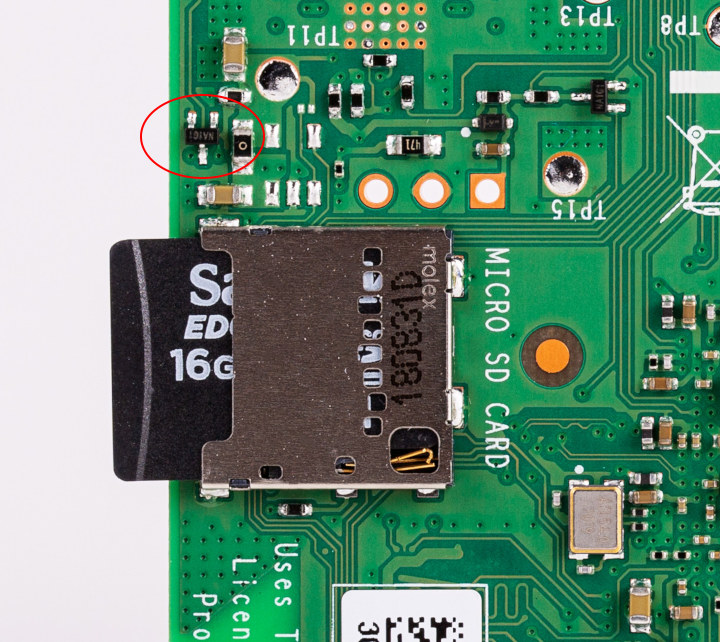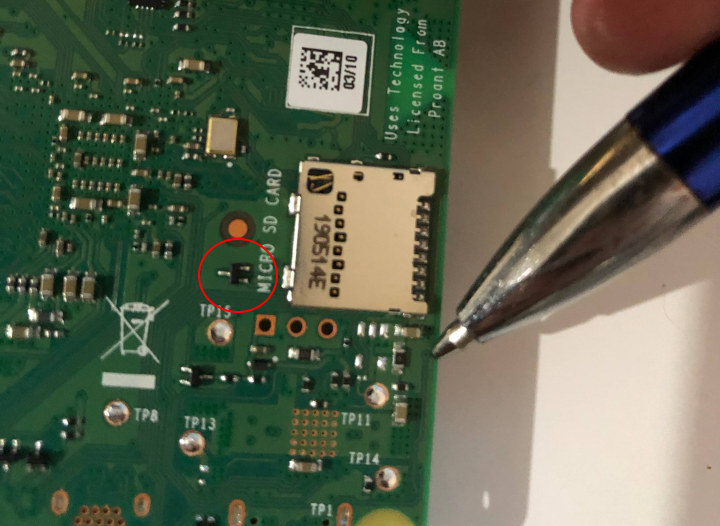The first Raspberry Pi 4 boards suffered from a poor USB-C power supply compatibility due to issues for the power circuitry. That means if you bought the official USB-C power supply you had no issues, but if you wanted to re-use a spare USB-C power supply or incompatible cable, you may be out of luck.
The Register is now reporting that the Raspberry Pi Foundation has discreetly released a new revision (v1.2) of the board that fixes several issues including USB-C PD compatibility, and as Eben Upton explains the new revision also:
moved the WLCSP SD card voltage switch to the top side
… silk screen tweaks to reduce solder bridging in manufacture”.
The new boards have been around for a couple of months as some users report the USB-C power issues have been fixed on new boards.
Spotting Differences in the new Raspberry Pi 4 Rev 1.2 Board?
The bad news is if you buy the board online, nobody is advertising about the new revision. If you buy in a brick-and-mortar store, there aren’t obvious differences, and the silkscreen markings are apparently the same, but you can check the new location of the WLCSP SD card voltage switch.


They moved the switch because some people would inadvertently unsolder it in the original version of the board while trying to insert the MicroSD card.
Another way is to check the revision in the command line with cat /proc/cpuinfo
That’s the output from Rev 1.2 board:
|
1 2 3 4 5 6 7 8 9 10 11 12 13 14 |
root@pi4:/home/pi# cat /proc/cpuinfo processor : 0 model name : ARMv7 Processor rev 3 (v7l) BogoMIPS : 108.00 Features : half thumb fastmult vfp edsp neon vfpv3 tls vfpv4 idiva idivt vfpd32 lpae evtstrm crc32 CPU implementer : 0x41 CPU architecture: 7 CPU variant : 0x0 CPU part : 0xd08 CPU revision : 3 ... Hardware : BCM2835 Revision : c03112 Serial : 10000000c3ed3713<code> |
If the revision reads “c03112” that means you are the lucky owner of a Raspberry Pi 4 Rev 1.2 board. My board has “Revision : a03111” instead. with the first non-zero a, b, c digit referring to the amount of memory (1GB, 2GB, 4GB RAM). You can learn how to decode Raspberry Pi revision codes here.

Jean-Luc started CNX Software in 2010 as a part-time endeavor, before quitting his job as a software engineering manager, and starting to write daily news, and reviews full time later in 2011.
Support CNX Software! Donate via cryptocurrencies, become a Patron on Patreon, or purchase goods on Amazon or Aliexpress




